Remembering Professors Donald Shoup & Michael Burawoy: Academic Legacies, Urbanism, and Career Reflections
Donald Shoup and Michael Burawoy were beloved professors here in California who both passed away in the same week. I reflect on the loss of these titans.
The academic space, and broader world, lost two titans this week: Donald Shoup and Michael Burawoy. This essay is an ode to both of these professors, one changed the way we thought about urbanism while the other was taken too soon because of our dangerous streets. I reflect on both here.
Donald Shoup: Reshaped How We Think About Cities
Donald Shoup was the Distinguished Research Professor in the Department of Urban Planning at UCLA. He is most famous for his book The High Cost of Free Parking (2005). The book is a massive treatise on something very simple, but it approaches it in a technical and brilliant manner. Everyone who studies or thinks about urbanism should at least browse through the 700+ page behemoth.
Indeed, many urbanists often cite Shoup’s work as the foundation for their own way of thinking about our broken cities. His ideas certainly helped me make sense of my We Ruined Our Own Cities series. Some were even lucky enough to have taken him for a class or collaborated with him in some way.
Urbanists from across the internet have come out to mourn the loss of someone so crucial to the movement. It is special to see this kind of universal adoration. I have taken this space to link to some responses from some across social media and various networks.
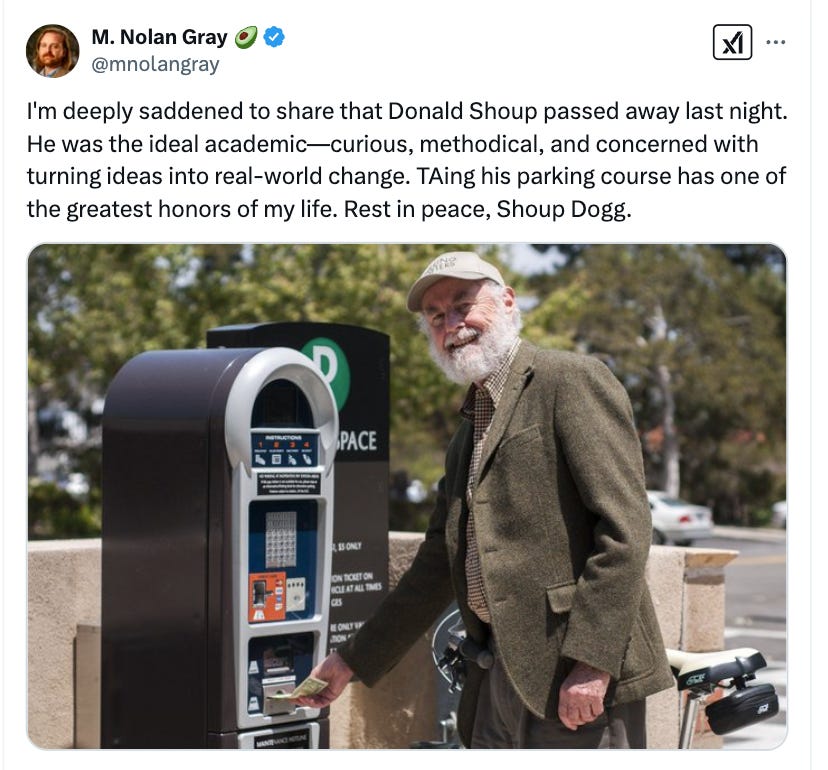
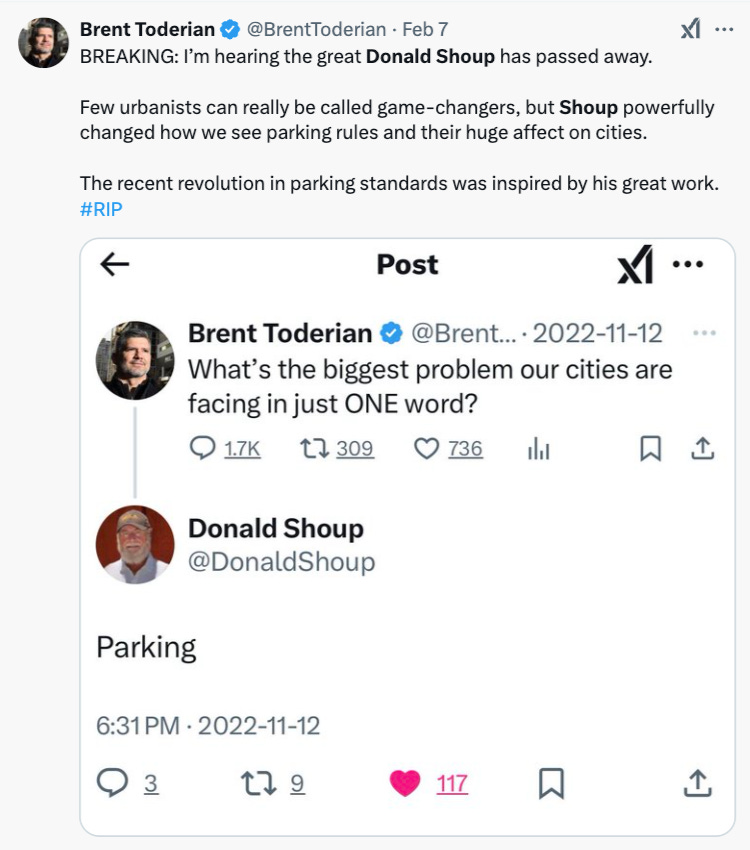
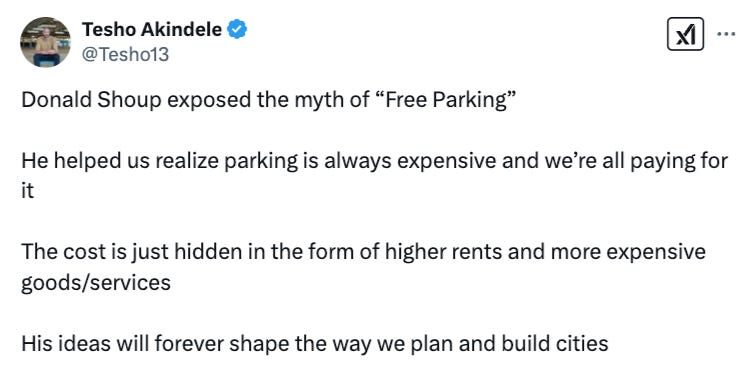
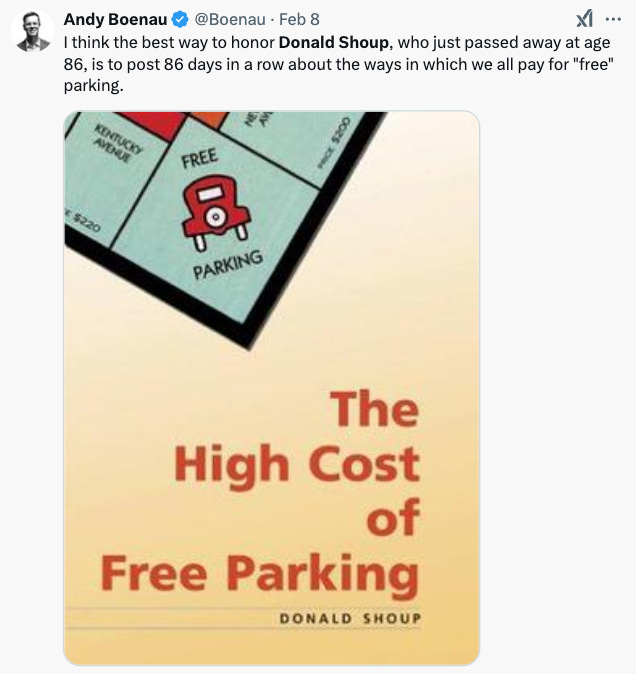

Thrillingly, Donald Shoup posted the article on his Twitter account. Of course, a Tweeted link is a small gesture in the grand scheme of things. But it was enough to leave me, a young writer and college student, riding high for the next week.
Via
on Substack.Dr. Shoup was the absolutely dominant theorist in the field of urban planning, as it relates in particular to the building, allocating, and pricing of parking spaces (of which there may be 1 or 2 billion in the USA1, for our fleet of almost 300 million cars)
Via
.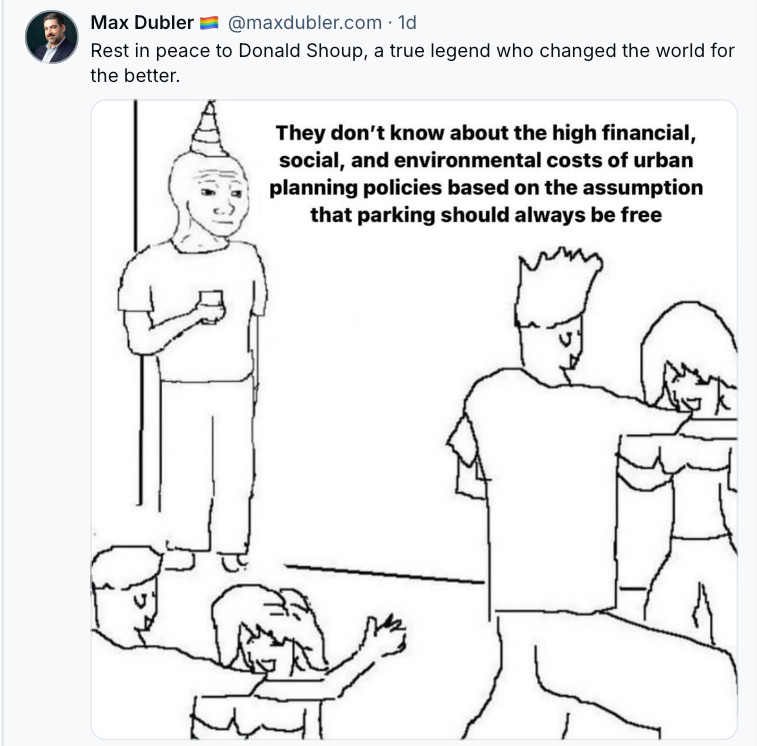

The professor will also be remembered for his sense of humor. The gray bearded, white man with leather patches on his tweed blazer embraced the “Shoup Dogg” nickname given to him by his grad students. He influenced an entire generation of planners, many of whom call themselves "Shoupistas" and have promulgated his ideas and recommendations to encourage better city planning.
Via Damien Newton and Melanie Curr at Streetsblog.
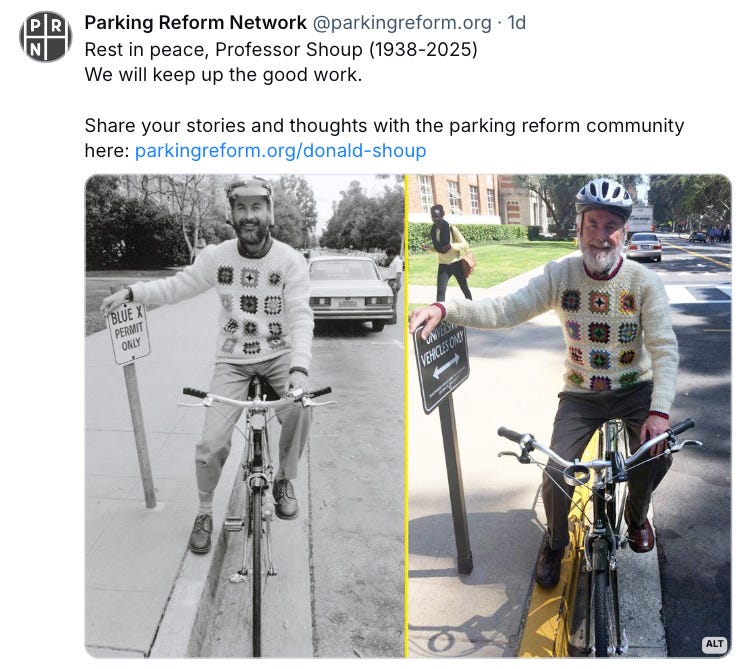
Michael Burawoy: Needlessly Taken Too Soon
Michael Burawoy was a Professor of Sociology at the University of California, Berkeley. He is likely best known for his Manufacturing Consent (1988) and his advancement of the ethnographic research method. As an ethnographer myself, his work is invaluable to field-based studies.
Just like with Shoup, I witnessed an outpouring of mourning for Dr. Burawoy. He was a beloved scholar who had an immense impact on the broader social sciences. Browsing through Reddit, my Linkedin, or other mediums, it is clear that his students and readers of his work will not be soon forgotten
While Dr. Burawoy’s work may have only been tangentially related to urbanism, the way that he was taken from the world is directly related. He was a long-time resident of Oakland, commuting to nearby Berkeley to teach his classes. Unfortunately, like much of America, the streets in his prioritized moving cars fast at the expense of pedestrian safety. I have posted a video below of where Dr. Burawoy was killed by a hit-and-run driver:
The street where a driver hit the professor is designed like a motor speedway. Despite being only 30 MPH, Grand Avenue at Park View Terrace has at least five lanes that are wide open. It’s right next to a walkable strip of the city between a pedestrian-heavy park. This is malpractice. Let’s compare to another road with a similar design.
Here’s Cow Camp Road, a road in a newer incorporated area of Orange County that isn’t too far from where I live. There is not a lot out there. Given that, the road in the middle of nowhere has a graded speed limit of 55 MPH, while the one in Oakland has a posted speed limit of 30 MPH.
Despite the supposed speed differences, Cow Camp Road has a similar design to the one in the middle of urbanized Oakland. Both of these roads have 6 lanes, including turning lanes, that are wide open. It does not matter the posted speed limit, the street design for both tells drivers they can go fast. On rural Cow Camp Road, that probably makes sense; on Grand and Park, that is a deadly mixture for the countless pedestrians walking around.
What the area around this busy street needed a long time ago was a road diet. This means shrinking down lanes and adding barriers or other traffic-calming features. There are many examples out there, including La Jolla Boulevard in San Diego near me. I used some features from the San Diego example to show what Grand Avenue and Park View Terrace might look like if it were really built for an urban space with considerable pedestrians and only 25 MPH.
Oftentimes, localities are afraid to add these kinds of barriers because it will slow down cars (which was apparently the case on this exact street). But we cannot be afraid to slow down cars; it’s better for speeding drivers to damage their own cars rather than everything else around them. Even a few blocks down has a modest version of a road diet, with some curb extensions and barriers. It is malpractice to simply let the rest of the strip maintain the unsafe design, especially now after the needless loss of the beloved professor, Dr. Burawoy.
The Kind of Professors I Want to Be
I cannot help but relate to both Donald Shoup and Michael Burawoy. Both made major impacts on their field and beyond. They were long-time professors at California institutions, beloved by their students and those who came across their work. One refined urbanism, while the other did the same for ethnography.
I reflect on my own experience in the lives of Professor Shoup and Professor Burawoy. I am trying to make my mark in aspects of urbanism through the ethnographic method while teaching here in California. I can only hope to have a fraction of the influence as both of these professors we lost this week.
It’s sad to see that the world has lost these titans, but there is solace that they did it the way that it should be done. Their legacies will endure long after. These are the kinds of professors who I aspire to be like.







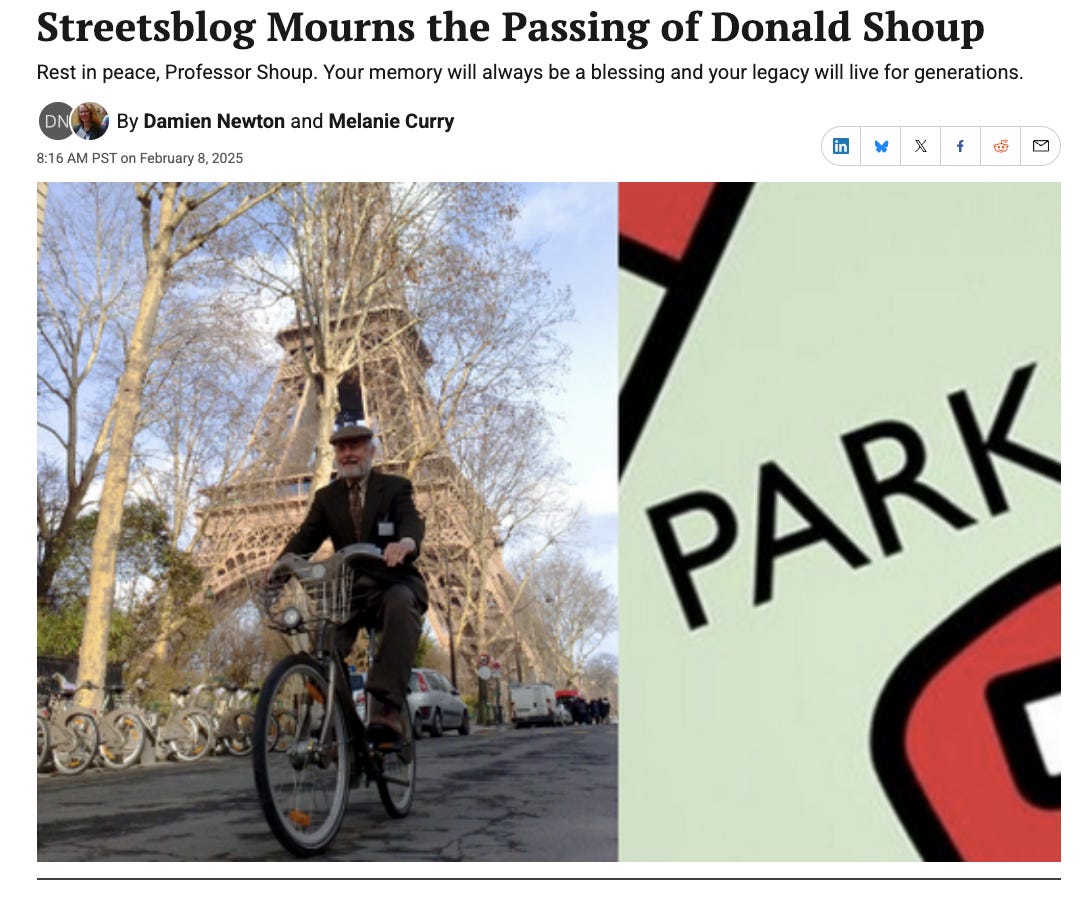
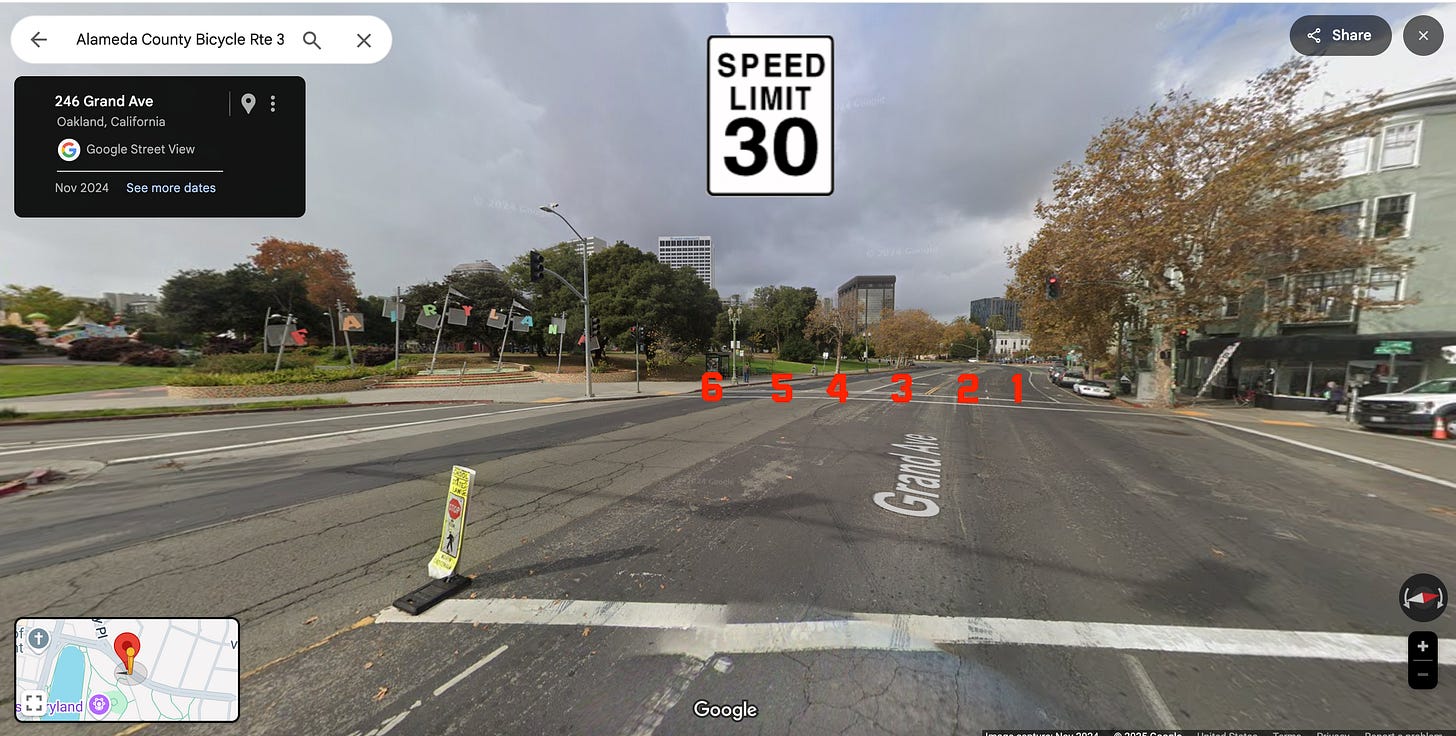
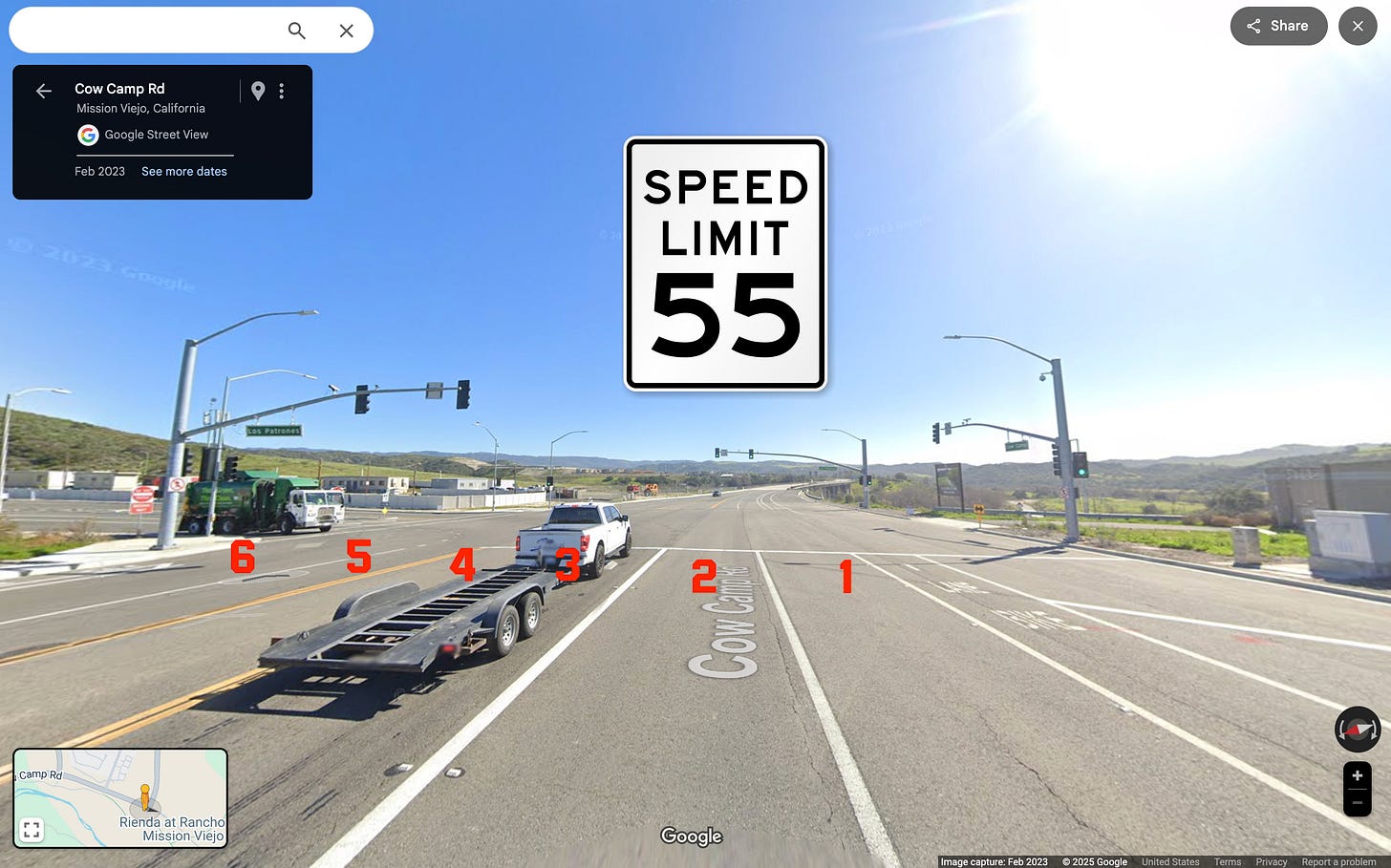
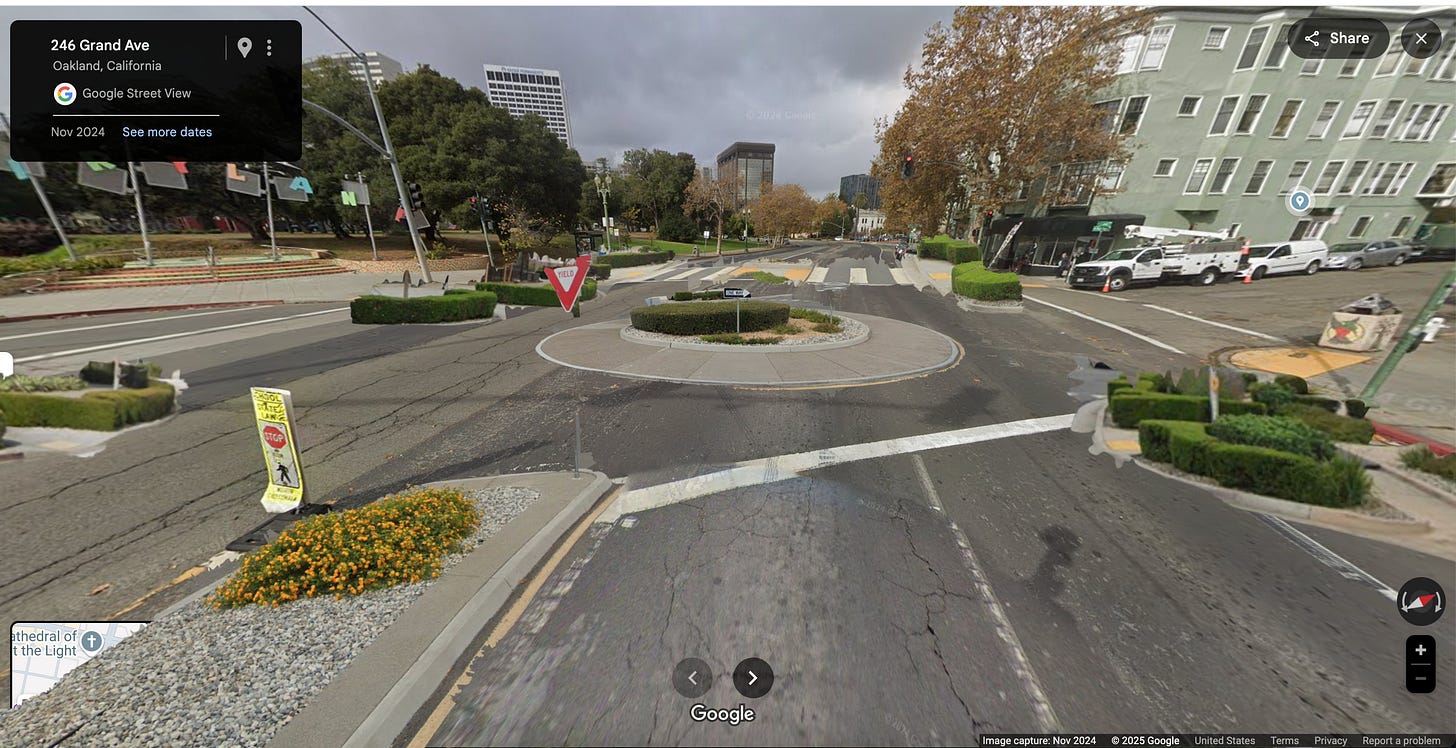
One reason Shoup's work is so important is that it brings in supply & demand economics. It opens the door for persuasive ideas like a parking benefit district, where residents and shop owners directly benefit from parking revenue.